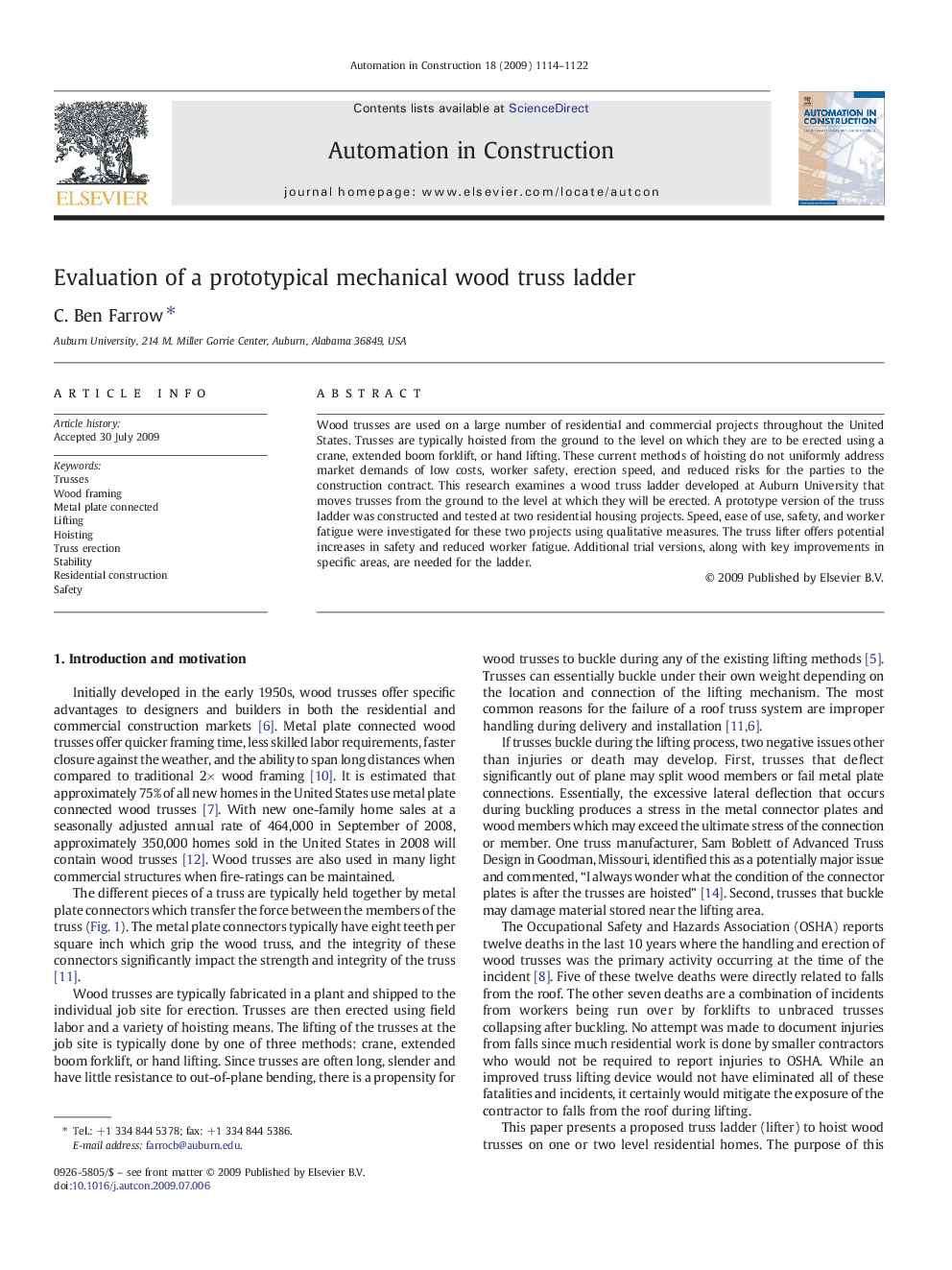| Article ID | Journal | Published Year | Pages | File Type |
|---|---|---|---|---|
| 247234 | Automation in Construction | 2009 | 9 Pages |
Wood trusses are used on a large number of residential and commercial projects throughout the United States. Trusses are typically hoisted from the ground to the level on which they are to be erected using a crane, extended boom forklift, or hand lifting. These current methods of hoisting do not uniformly address market demands of low costs, worker safety, erection speed, and reduced risks for the parties to the construction contract. This research examines a wood truss ladder developed at Auburn University that moves trusses from the ground to the level at which they will be erected. A prototype version of the truss ladder was constructed and tested at two residential housing projects. Speed, ease of use, safety, and worker fatigue were investigated for these two projects using qualitative measures. The truss lifter offers potential increases in safety and reduced worker fatigue. Additional trial versions, along with key improvements in specific areas, are needed for the ladder.
